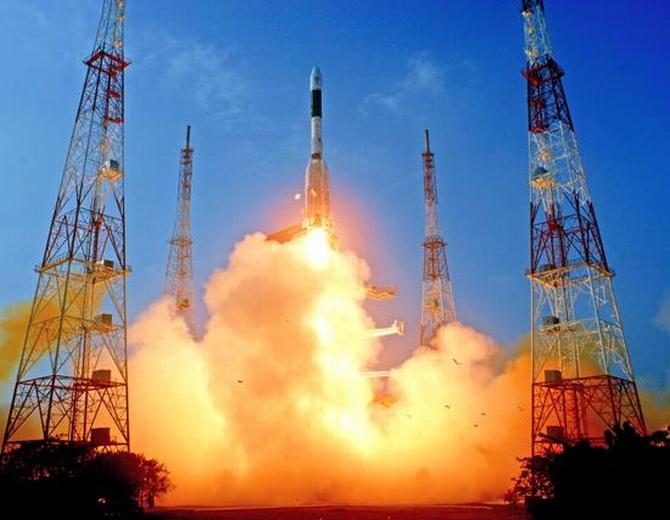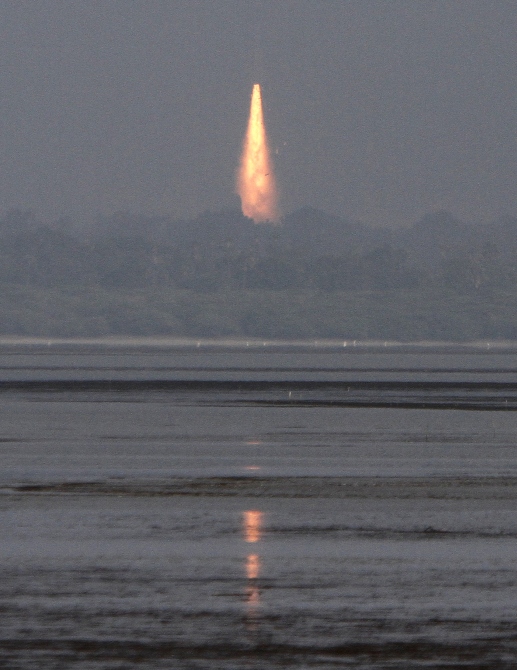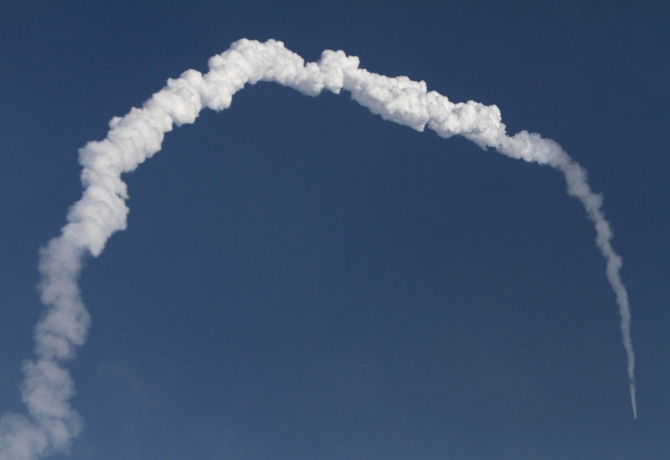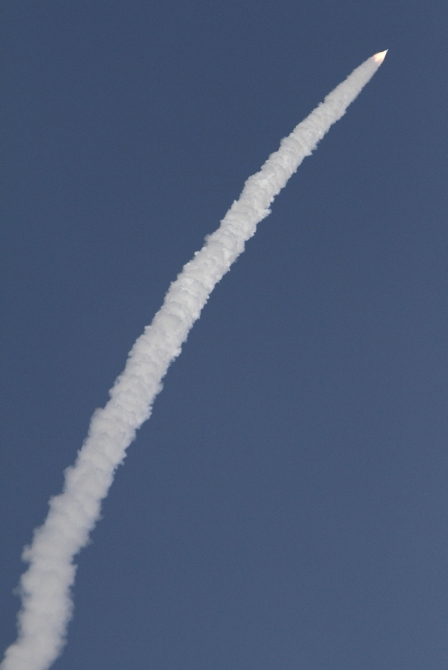 | « Back to article | Print this article |
How ISRO tamed 'naughty boy' GSLV-D5
India on Sunday successfully launched its heavy-duty rocket with indigenous cryogenic engine that placed a communication satellite into the orbit, with Indian Space Research Organisation scientists finally taming the 'naughty boy' GSLV and propelling the country into an elite club of countries.
The mission, which cost around Rs 360 crore, is a major milestone for the ISRO after "toiling" for 20 years and ended the jinx plaguing the GSLV programme which suffered twin back-to-back failures in 2010 while its launch in August last year was aborted at the last minute.
"This is another major achievement for the GSLV programme and I would say this is an important day for science and technology, for space technology in the country (as) 20 years of efforts in realising the cryogenic engine and stage has now fructified," a visibly relieved ISRO chief K Radhakrishnan said.
Click NEXT to read further...
How ISRO tamed 'naughty boy' GSLV-D5
In a textbook launch, the 49.13-metre tall GSLV D5 rocket with an indigenous cryogenic engine and stage blasted off at 4.18 PM from Satish Dhawan Space Centre and injected the 1,982-kg GSAT-14 communication satellite into the intended orbit after 17.13 minutes flight.
With this launch, India became the sixth space agency in the world after the United States, Russia, Japan, China and France to have joined the indigenous cryogenic regime. The technology will help to launch heavy satellites into geostationary orbit.
Congratulating the scientists, Prime Minister Manmohan Singh said the launch marked "another important step that the country has taken in the area of science and technology".
Radhakrishnan said ISRO's "toiling of 20 years, excruciating efforts of last three and half years" after its first test flight of the cryogenic engine and all the efforts by Team ISRO in the last few years in understanding Geosynchronous Satellite Launch Vehicle and making it a liable vehicle showed the scientists' maturity.
He said his scientists had put their heart and soul to ensure this proud moment and that "we feel we have repaid all our debt to our country."
Click NEXT to read further...
How ISRO tamed 'naughty boy' GSLV-D5
The GSLV D5's scheduled launch on August 19 last year was called off in the eleventh hour after a fuel leak, following which ISRO moved the vehicle back to the VehicleAssemblyBuilding and rectified the defect.
The events prompted one of the senior scientists, Shivan, to quip that the "naughty boy GSLV" had matured into an "obedient one".
GSAT-14 is India's 23rd geostationary communication satellite, as four of GSAT-14’s predecessors were launched by GSLV during 2001, 2003, 2004 and 2007 respectively.
GSAT-14 would join the group of India's nine operational geostationary satellites. The primary objective of this mission is to augment the in-orbit capacity of extended C and Ku-band transponders and provide a platform for new experiments.
Click NEXT to read further...
How ISRO tamed 'naughty boy' GSLV-D5
The GSAT-14 will be positioned at 74 degree East longitude and co-located with INSAT-3C, INSAT-4CR and KALPANA-1 satellites.
The 12 communication transponders onboard GSAT-14 will further augment the capacity in the INSAT/GSAT system. ISRO's Cryogenic Upper Stage Project was aimed at replacing the stage procured from Russia and used in GSLV flights, according to ISRO.
ISRO officials had been extremely vigilant in tightening loose ends this time around to avoid an unsuccessful attempt.
Design modifications were implemented wherever required in the launch vehicle along with thorough ground testing and improvements.
The modifications included redesigning of Lower Shroud, which protects the cryogenic engine during atmospheric flight of GSLV-D5 and redesigning of the wire tunnel of the cryo stage to withstand larger forces in flight.
The national space agency also performed two 'Acceptance Tests for flight unit of Fuel Booster Turbo Pump, High altitude tests to confirm the ignition sequence in flight under vacuum, to validate design improvements and Cryogenic Main Engine (200 sec) and Steering Engine (100 sec) acceptance tests at Main Engine Test and High Altitude Test.
TOP photo features you missed last week
Click on MORE to see another PHOTO features...




